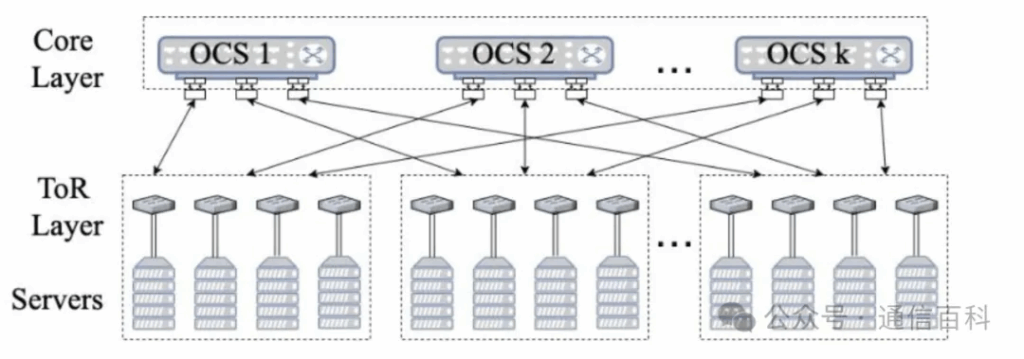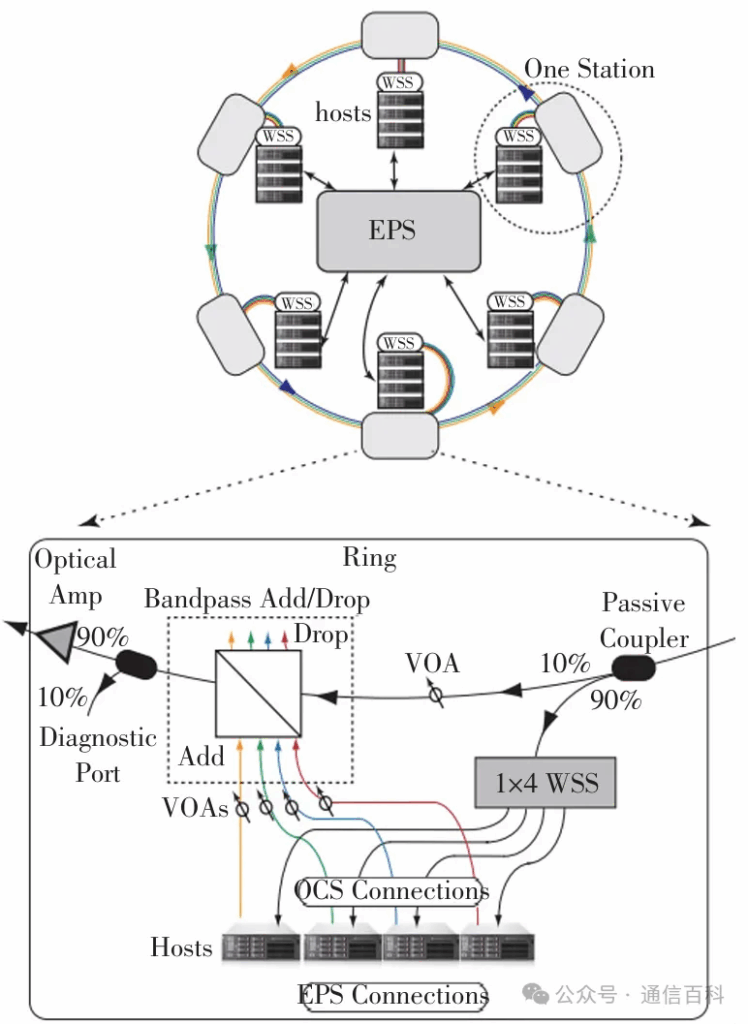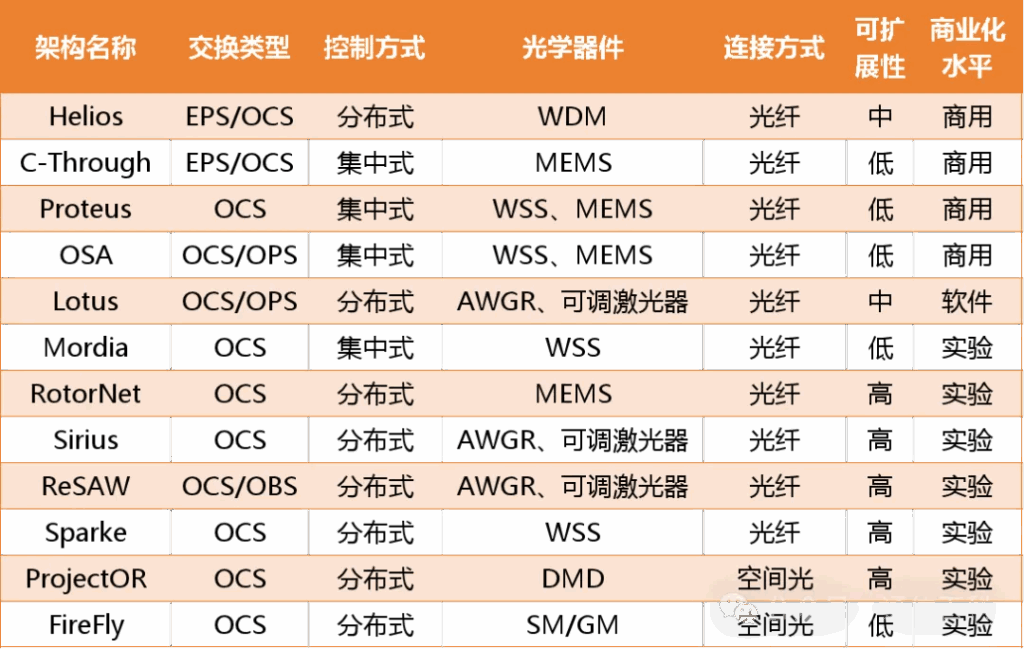Let’s start with an analogy to understand what ‘hybrid photonic-electronic networking’ is all about.
Traditional data center networks are like a busy intersection. As more cars (data) come in, the traffic lights (electronic switches) start having trouble managing them. So, engineers came up with a smart solution: build a few direct “light-speed express lanes” (optical switching) next to the intersection, letting big trucks (large-volume data) zoom through directly, easing the pressure on the main road.
This is the core idea of “hybrid photonic-electronic networking”: combining the high bandwidth and low energy consumption of optical switching with the flexibility and adaptability of electronic switching.

However, this optical “express lane” has a small drawback: it’s not as “smart” as electronic switching. Once traffic suddenly surges or routes need temporary detours (what networks often call “bursty traffic”), optical path switching can be a bit slow, easily causing congestion at the intersection. So, how to design a more congestion-resistant road network structure (robust topology), and how to quickly find the optimal route when traffic changes abruptly (routing optimization), have become key research challenges everyone is focusing on.
Currently, there are a few main camps, simply put:
Established Camp: Architectures like Helios, C-Through, Proteus, OSA, etc. These are already commercialized. They typically have moderate or low scalability but win on stability and availability.
Helios Network Architecture:adopting a two-level multi-rooted tree topology, composed of PoD switches and a core layer (electronic switches + MEMS optical circuit switches). Servers connect to PoD switches via copper cables, but face issues like limited port scale, low optical bandwidth utilization, and MEMS insertion loss.

Helios Network Architecture
C-Through Network Architecture:A hybrid architecture integrating optical circuit switching and packet switching, achieving optical path scheduling through centralized MEMS.

C-Through Network Architecture
The core innovation of the OSA optical switching architecture lies in using software-defined wavelength scheduling to build a dynamically reconfigurable all-optical interconnected data center network. This architecture integrates Wavelength Selective Switches (WSS) and Micro-Electro-Mechanical Systems mirror arrays (MEMS) to achieve on-demand allocation of optical path resources.

OSA optical switching architecture
Innovator Camp: Mordia, RotorNet, Sirius, ReSAW, Sparke, ProjectOR, FireFly. These are still in the experimental stage, each with its own specialties. Like ProjectOR and FireFly don’t even use fiber optics, directly using “light flying through the air” (free-space optics) for connections – a very avant-garde idea.
Mordia Network Architecture:A centralized optical circuit switching prototype jointly developed by UC San Diego and Google, using WSS technology.

Mordia Network Architecture
FireFly Optical Interconnect Architecture:A free-space optical communication solution proposed by Brook University and Carnegie Mellon University. It builds wireless optical links between ToR switches via mirrors mounted on rack tops, requiring precise avoidance of physical obstructions.

FireFly Optical Interconnect Architecture
Pioneers an optical burst switching mechanism. After electronic switches identify long packets destined for the same target, they schedule them onto an AWGR optical path for picosecond-level cross-rack traffic steering, bypassing central node bottlenecks.
It mainly solves the problem of how to efficiently transmit data between servers in different racks within the same data center. Its cleverness lies in having the traditional electronic switch (like a traffic cop) first look at where the data packet is going. If it discovers a large batch of long packets heading to the same place (like a convoy of trucks), it immediately directs them onto the light-speed express lane (AWGR). This way, it avoids spending big money to build complex central scheduling hubs while letting existing electronic switching equipment play a bigger role.
Software Camp: Lotus is quite special; it mainly implements hybrid photonic-electronic control through software, with moderate scalability.
A software-controlled AWGR optical backplane architecture, specifically optimized for machine learning clusters. Measured performance significantly outperforms traditional topologies:

Lotus Network Architecture
Compared to Dragonfly and 3D-Torus, communication latency is reduced by 50%, and average throughput is improved by 5 times and 2 times respectively.
To see the differences between these solutions more clearly, a big comparison table is listed below.

Finally, it must be mentioned that all these hybrid photonic-electronic solutions rely on the sophisticated optical components (like MEMS, AWGR, WSS) working silently behind the scenes. But as mentioned at the beginning, the “lack of flexibility” of optical switching remains a hard nut to crack. When network traffic surges suddenly like rush hour, the speed of optical path switching can’t keep up, easily causing congestion.
How to make these “light-speed express lanes” as flexible and responsive to sudden traffic bursts as regular roads is precisely the challenge engineers are striving to overcome next. This requires smarter road design (topology) and more intelligent traffic control systems (traffic control algorithms).

发表回复